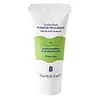What's inside
What's inside
 Key Ingredients
Key Ingredients

 Benefits
Benefits

 Concerns
Concerns

 Ingredients Side-by-side
Ingredients Side-by-side

Carthamus Tinctorius Seed Oil
MaskingHelianthus Annuus Seed Oil
EmollientRicinus Communis Seed Oil
MaskingCaprylic/Capric Triglyceride
MaskingCocos Nucifera Oil
MaskingEthylhexyl Stearate
EmollientPrunus Amygdalus Dulcis Oil
Skin ConditioningDicaprylyl Ether
EmollientSimmondsia Chinensis Seed Oil
EmollientParfum
MaskingC12-15 Alkyl Benzoate
AntimicrobialCannabis Sativa Seed Oil
EmollientAnanas Sativus Fruit Extract
Skin ConditioningCucumis Melo Fruit Extract
Skin ConditioningPersea Gratissima Oil
Skin ConditioningGlycine Soja Oil
EmollientButyrospermum Parkii Butter
Skin ConditioningPhenoxyethanol
PreservativeTocopheryl Acetate
AntioxidantLimonene
PerfumingBenzyl Benzoate
AntimicrobialLinalool
PerfumingTocopherol
AntioxidantRetinyl Palmitate
Skin ConditioningPolysorbate 20
EmulsifyingWater
Skin ConditioningAscorbic Acid
AntioxidantPanthenol
Skin ConditioningCitric Acid
BufferingBiotin
AntiseborrhoeicNiacinamide
SmoothingCarthamus Tinctorius Seed Oil, Helianthus Annuus Seed Oil, Ricinus Communis Seed Oil, Caprylic/Capric Triglyceride, Cocos Nucifera Oil, Ethylhexyl Stearate, Prunus Amygdalus Dulcis Oil, Dicaprylyl Ether, Simmondsia Chinensis Seed Oil, Parfum, C12-15 Alkyl Benzoate, Cannabis Sativa Seed Oil, Ananas Sativus Fruit Extract, Cucumis Melo Fruit Extract, Persea Gratissima Oil, Glycine Soja Oil, Butyrospermum Parkii Butter, Phenoxyethanol, Tocopheryl Acetate, Limonene, Benzyl Benzoate, Linalool, Tocopherol, Retinyl Palmitate, Polysorbate 20, Water, Ascorbic Acid, Panthenol, Citric Acid, Biotin, Niacinamide
Water
Skin ConditioningZinc Carbonate
Glyceryl Stearate
EmollientSilica
AbrasiveGlycerin
HumectantSqualane
EmollientSalicylic Acid
MaskingCetearyl Olivate
Sorbitan Olivate
EmulsifyingPhenoxyethanol
PreservativeDextrin
AbsorbentPolydextrose
HumectantAlpha-Glucan Oligosaccharide
CleansingAmylopectin
Niacinamide
SmoothingMaltodextrin
AbsorbentEthylhexylglycerin
Skin ConditioningTocopherol
AntioxidantDisodium EDTA
Biosaccharide Gum-1
HumectantButylene Glycol
HumectantHamamelis Virginiana Leaf Extract
Skin ConditioningCI 77492
Cosmetic ColorantWater, Zinc Carbonate, Glyceryl Stearate, Silica, Glycerin, Squalane, Salicylic Acid, Cetearyl Olivate, Sorbitan Olivate, Phenoxyethanol, Dextrin, Polydextrose, Alpha-Glucan Oligosaccharide, Amylopectin, Niacinamide, Maltodextrin, Ethylhexylglycerin, Tocopherol, Disodium EDTA, Biosaccharide Gum-1, Butylene Glycol, Hamamelis Virginiana Leaf Extract, CI 77492
Ingredients Explained
These ingredients are found in both products.
Ingredients higher up in an ingredient list are typically present in a larger amount.
Niacinamide is a multitasking form of vitamin B3 that strengthens the skin barrier, reduces pores and dark spots, regulates oil, and improves signs of aging.
And the best part? It's gentle and well-tolerated by most skin types, including sensitive and reactive skin.
You might have heard of "niacin flush", or the reddening of skin that causes itchiness. Niacinamide has not been found to cause this.
In very rare cases, some individuals may not be able to tolerate niacinamide at all or experience an allergic reaction to it.
If you are experiencing flaking, irritation, and dryness with this ingredient, be sure to double check all your products as this ingredient can be found in all categories of skincare.
When incorporating niacinamide into your routine, look out for concentration amounts. Typically, 5% niacinamide provides benefits such as fading dark spots. However, if you have sensitive skin, it is better to begin with a smaller concentration.
When you apply niacinamide to your skin, your body converts it into nicotinamide adenine dinucleotide (NAD). NAD is an essential coenzyme that is already found in your cells as "fuel" and powers countless biological processes.
In your skin, NAD helps repair cell damage, produce new healthy cells, support collagen production, strengthen the skin barrier, and fight environmental stressors (like UV and pollution).
Our natural NAD levels start to decline with age, leading to slower skin repair, visible aging, and a weaker skin barrier. By providing your skin niacinamide, you're recharging your skin's NAD levels. This leads to stronger, healthier, and younger looking skin.
Another name for vitamin B3 is nicotinamide. This vitamin is water-soluble and our bodies don't store it. We obtain Vitamin B3 from either food or skincare. Meat, fish, wheat, yeast, and leafy greens contain vitamin B3.
The type of niacinamide used in skincare is synthetically created.
Learn more about NiacinamidePhenoxyethanol is a preservative that has germicide, antimicrobial, and aromatic properties. Studies show that phenoxyethanol can prevent microbial growth. By itself, it has a scent that is similar to that of a rose.
It's often used in formulations along with Caprylyl Glycol to preserve the shelf life of products.
Tocopherol (also known as Vitamin E) is a common antioxidant used to help protect the skin from free-radicals and strengthen the skin barrier. It's also fat soluble - this means our skin is great at absorbing it.
Vitamin E also helps keep your natural skin lipids healthy. Your lipid skin barrier naturally consists of lipids, ceramides, and fatty acids. Vitamin E offers extra protection for your skin’s lipid barrier, keeping your skin healthy and nourished.
Another benefit is a bit of UV protection. Vitamin E helps reduce the damage caused by UVB rays. (It should not replace your sunscreen). Combining it with Vitamin C can decrease sunburned cells and hyperpigmentation after UV exposure.
You might have noticed Vitamin E + C often paired together. This is because it is great at stabilizing Vitamin C. Using the two together helps increase the effectiveness of both ingredients.
There are often claims that Vitamin E can reduce/prevent scarring, but these claims haven't been confirmed by scientific research.
Learn more about TocopherolWater. It's the most common cosmetic ingredient of all. You'll usually see it at the top of ingredient lists, meaning that it makes up the largest part of the product.
So why is it so popular? Water most often acts as a solvent - this means that it helps dissolve other ingredients into the formulation.
You'll also recognize water as that liquid we all need to stay alive. If you see this, drink a glass of water. Stay hydrated!
Learn more about Water